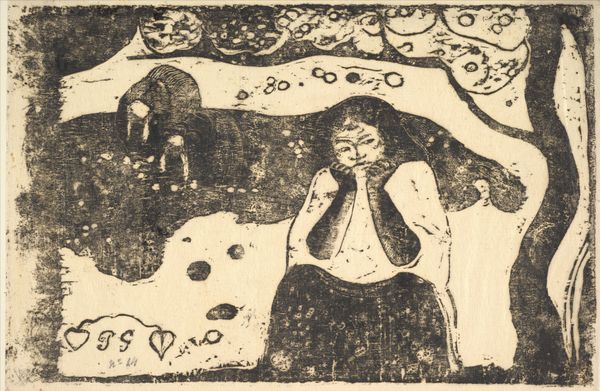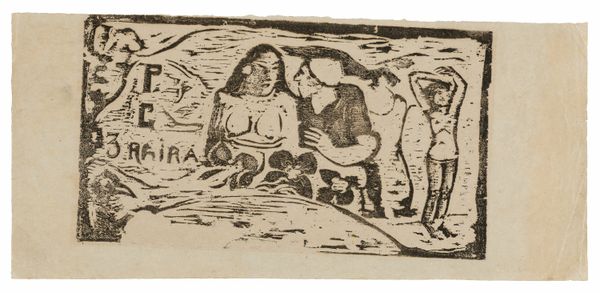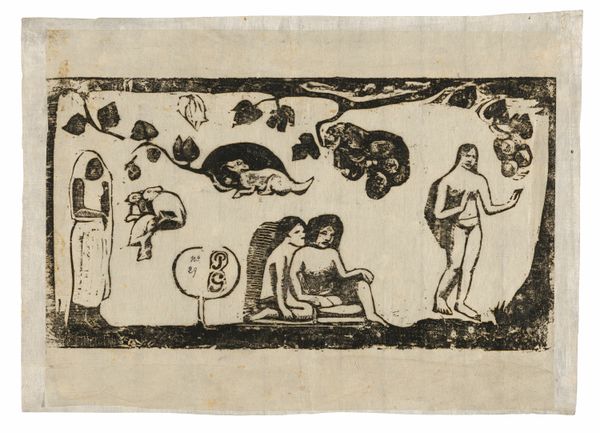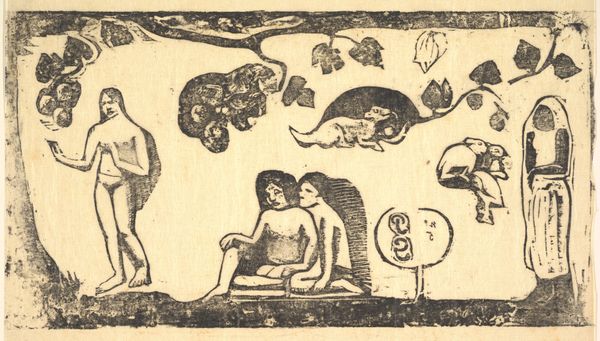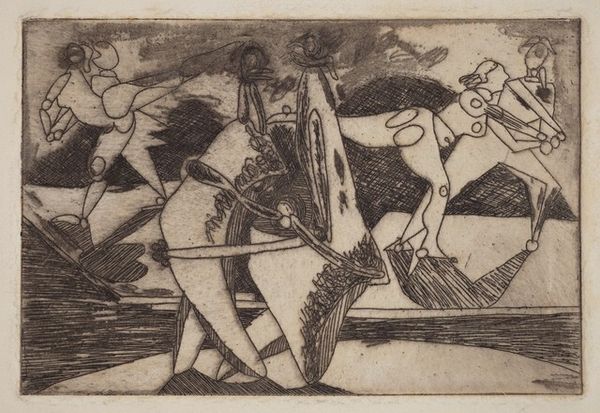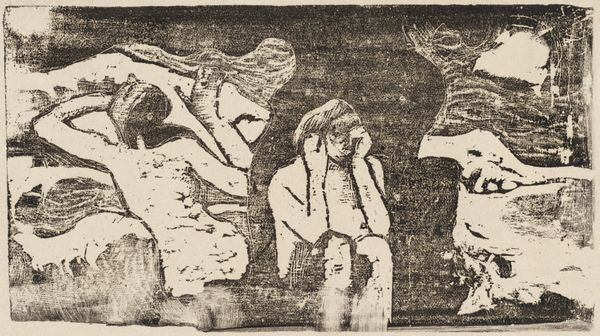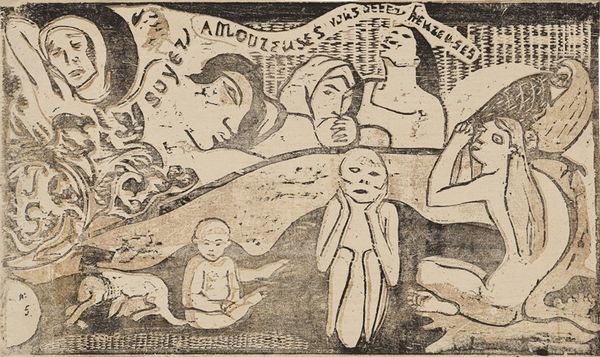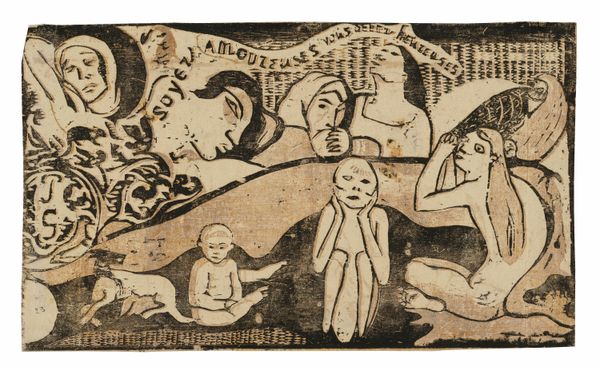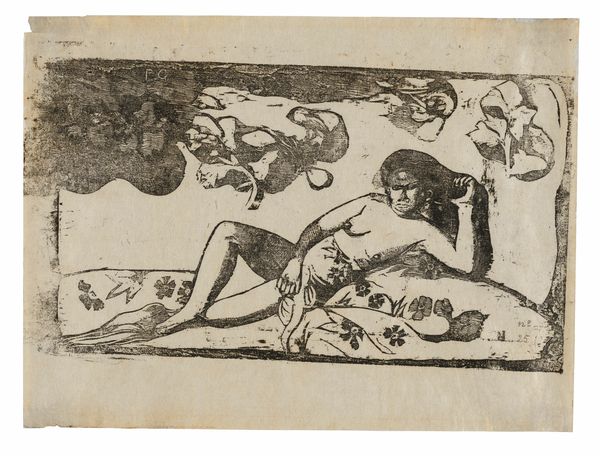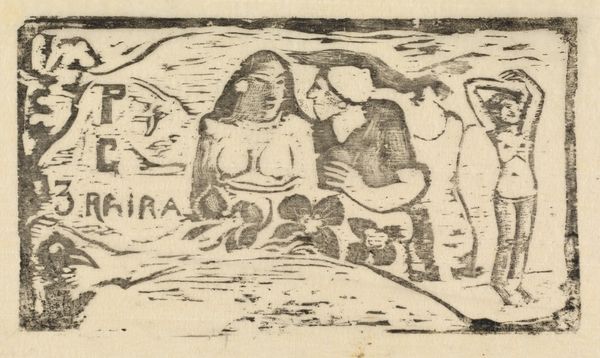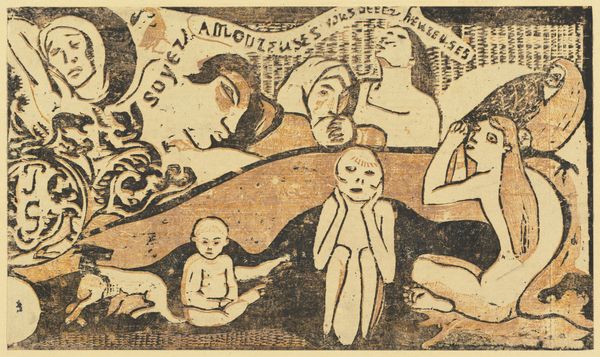
print, woodcut
#
narrative-art
# print
#
landscape
#
figuration
#
woodcut
#
symbolism
#
post-impressionism
Dimensions: image: 19.3 x 29.1 cm (7 5/8 x 11 7/16 in.) sheet: 24.9 x 34 cm (9 13/16 x 13 3/8 in.)
Copyright: National Gallery of Art: CC0 1.0
Editor: This is *Human Sorrow*, or *Miseres humaines*, a woodcut by Paul Gauguin from after 1895. It’s a rather small print, with this very stark black and white contrast that makes it feel both raw and deeply symbolic. What strikes you about it? Curator: I’m drawn to the context in which Gauguin produced these woodcuts. After his initial trip to Tahiti, and grappling with the reality of colonialism, the experience significantly shifted his understanding of culture, authenticity, and the very idea of the “primitive.” Do you see hints of this wrestling in the print's imagery? Editor: I do, now that you mention it. The figure's pose, that look of weariness… but also the overall visual language. It feels deliberate, like a constructed commentary on something larger than just personal grief. Curator: Exactly! Think about how Gauguin deliberately used a “primitive” medium, woodcut, a medium he associated with indigenous cultures, to express complex emotions related to modernity, displacement, and perhaps even his own disillusionment with the idealized vision of the South Pacific he initially sought. Consider the performative aspect here – the romanticizing of “authenticity.” Is Gauguin using it, or critiquing it? Editor: It's both, isn’t it? He is engaging with and perhaps also exploiting it. It feels incredibly layered now. I hadn't considered the politics embedded in the *medium* itself. Curator: Museums and galleries have played a crucial role in shaping the narratives around artists like Gauguin. Exhibiting these works often raises questions about cultural appropriation and the representation of marginalized communities. Reflecting on those choices becomes crucial to really engaging with his work. Editor: So much to unpack here. It challenges you to consider more deeply how societal structures influenced Gauguin's artistic choices. Curator: Precisely, and how we continue to engage with that legacy today. Thank you for this interesting reading.
Comments
No comments
Be the first to comment and join the conversation on the ultimate creative platform.

